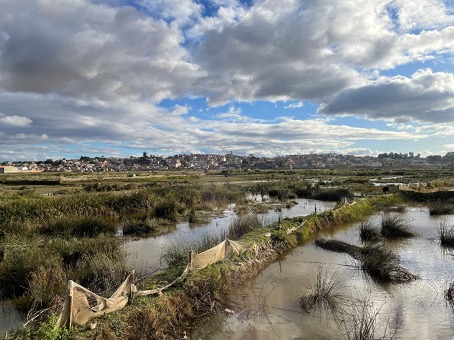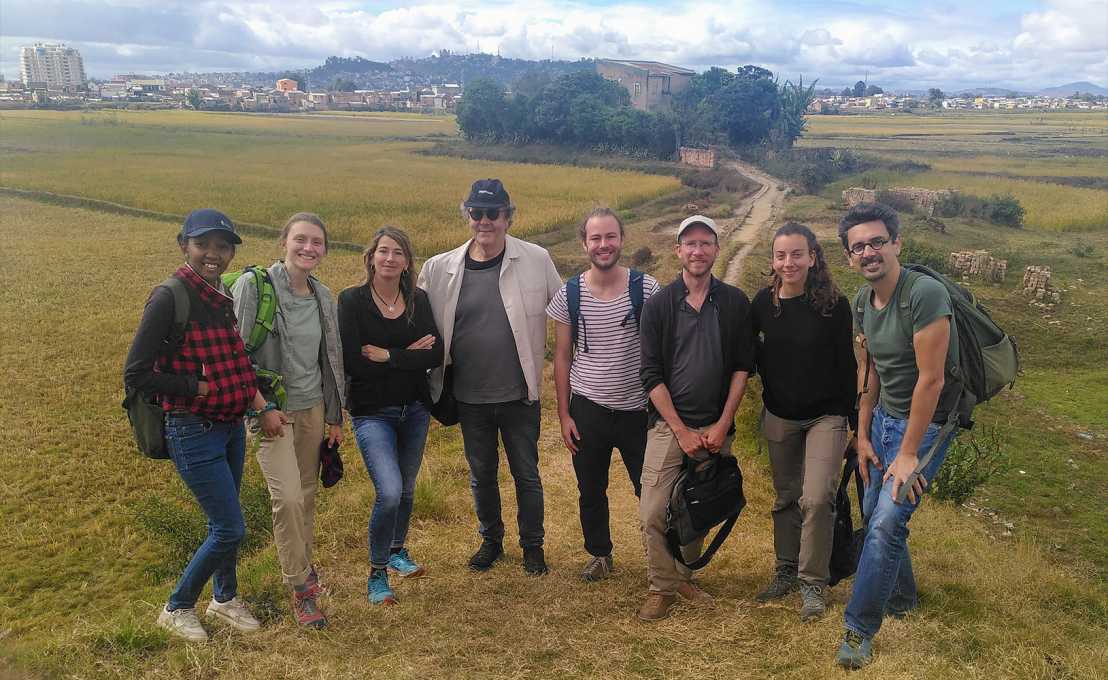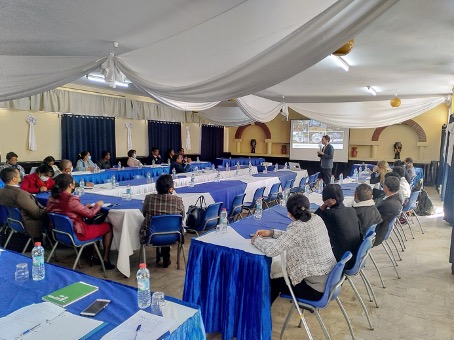Future Cities Lab Global Tana – News from Antananarivo
The team of FCL Tana project, looking at designing a resilient city using blue-green infrastructures, met in Madagascar for an intense week to meet key stakeholders, explore in detail the case study area and coordinate future field surveys.

One of the periurban wetlands under scrutiny for design (Anosizato). The area is at a dead end after decades of mining the soil to build bricks to sustain the urban growth of the capital (Photo: Christophe Girot).
In particular Prof. Adrienne Grêt-Regamey and Prof. Christophe Girot had the chance to explore with the team the area in the south-west of Antananarivo where architect students, from Switzerland and Madagascar, will work during next autumn Design Research Studio. A key moment to explore the dialogue between design and science at the heart of the project.

Part of the FCL team visiting the case study area in south-West Antananarivo. In the backgroup are the peri-urban flood plains where rice and vegetable production feed the city. (Photo: Nicolas Salliou)
The project is also a participatory project and from the start we established a partnership with the ministry of landscape management of Madagascar. The team and the ministry co-organized a kick-off meeting with stakeholders to introduce and discuss the project as well as organizing a visioning workshop. Stakeholders from local and and Greater Tana scale discussed their desire for their city in 2050. This will inform students architect in the design research studio about the expectations from stakeholders, as well as our exploration of transformation pathways.

Dr. Philipp Urech, postdoc and architect, introduced to stakeholders the point cloud technique of the Design Research Studio to come. This presentation followed kick-off words from our partner Ms. Felana Olisoa, the director or Sustainable Urbanism at the ministry of Landscape management in Madagascar. (Photo: Nicolas Salliou)
The week was also used to coordinate activities between postdocs and PhD students coming from Switzerland, Singapore and Madagascar. They are all set to explore the ecology, governance, sociology and hydrology of the area in the months to come. Data collected will be used to challenge the design made by student architects.